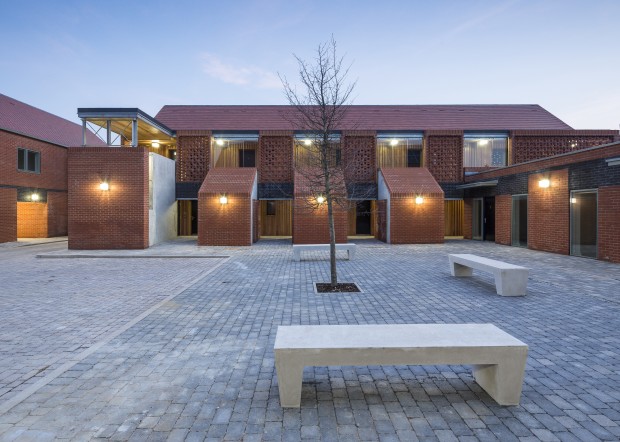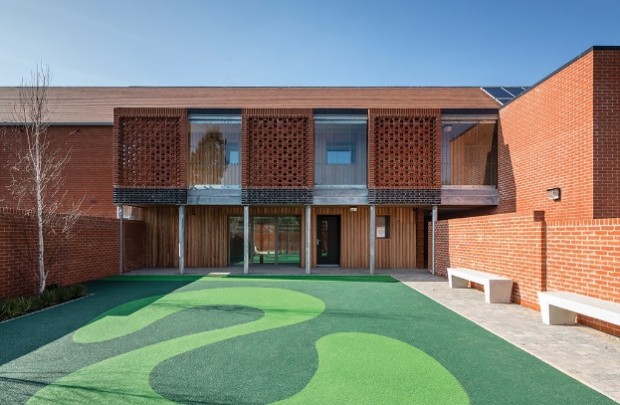We recently marked World Homeless Day. Its strap line, “locals act locally on a global scale” couldn't be more poignant.
It’s easy to take having a safe roof over our heads for granted; it’s a basic human need after all. But for increasing numbers of people, this can be the difference between life and death.
I'm sure we've all been moved by the images of desperate refugees fleeing war-torn countries, risking life and limb to find a safe haven – a place to call home. The response by communities worldwide to this mass displacement has been overwhelming, while the authorities are developing solutions that work at scale. Crucially, it’s placed the spotlight firmly on homelessness.
But homelessness is extremely complex, and away from the media glare, its causes aren't always obvious. We know that 40% of all social housing households include someone who is disabled or of pensionable age. And many people who find themselves homeless aren't single; there are many homeless families.
It could happen to anyone
We’re almost 50 years on from the ground-breaking TV film Cathy Come Home, but the message is still the same; anyone could get caught up in a spiral of homelessness. Often, all it takes is for someone to lose their job. These are all vulnerable groups at high risk of homelessness, with myriad social care needs.
A significant number of tenancy breakdowns resulting in homelessness is rooted in tenants struggling to cope; it’s now the single biggest cause of homelessness. According to recent government figures, 13,850 households were accepted as homeless between April-June this year – a rise of 5% across England (10% in London) compared to the same time last year. Nearly a third of these people became homeless following the ending of a private tenancy.
As of Autumn 2014, there were 2,744* people estimated or counted by local authorities to be sleeping rough in England on any one night. This was up from 2,414 in 2013. The largest reported percentage increases were in the North East and London.
*Figures submitted by local authorities to DCLG
- **Single homeless people are more likely to be male; over half are young (16-24), nearly a third are ex-offenders and a fifth from a BME group;
- 70% of homeless people using accommodation projects are men; 10% are aged 50 or over;
- A third have needs related to drug use (33%) or mental health (32%); over a quarter have complex and multiple needs (28%);
- 15% are recent rough sleepers;
- Nearly 57% of those seeking help are not in education, employment or training.
We know that mental health problems, substance misuse and alcohol dependency are more prevalent among the homeless population, with potentially significant costs for health and support services. Homeless Link has worked to promote this by encouraging local authorities to adopt health and wellbeing issues; at national level, the Department of Health and partners have developed a Memorandum of Understanding supporting joint action on improving health and wellbeing through the home, which many housing sector bodies including the HCA have signed up to.
The solutions
Given the complexities of individual circumstances, solutions aren't straightforward, but the link between health and housing is critical to successful outcomes.
For example, as demonstrated by Bradford Respite and Integrated Care and Support Service (BRICSS), set up in 2013 with funding from the Department of Health’s Homeless Hospital Discharge fund. This partnership between Horton Housing Association and Bevan Healthcare CIC offers safe and comfortable short-term accommodation – 14 self-contained units - in the city centre for people leaving hospital who are either homeless or have nowhere suitable to recover.
A hospital-based housing association staff member speeds up the referrals process and helps clients address issues which may be affecting their ability to maintain a tenancy. This includes alcohol or drug dependency, benefits and debt advice, immigration and asylum issues, sexual, emotional or physical abuse and mental or long-term physical health problems such as TB, HIV and diabetes. Typically, clients stay between 6-8 weeks before moving on to suitable housing.
The Snow Hill in Birmingham is a Midland Heart managed mixed community of 92 studio and 1 bedroom apartments for single homeless men and women alongside private tenants who are working in Birmingham. Almost half of the apartments are privately let as affordable homes. Homeless residents aged over 21 can access the on-site support service to build their independence, skills and employment prospects. The successful on-site bakery – Frost and Snow - offers volunteering and employment opportunities.
This is a complete departure from the building’s former use as a traditional hostel. The partnership between Birmingham City Council, the HCA and Midland Heart and a £10 million investment has transformed support provision for Birmingham’s homeless population by providing a holistic approach to homelessness service. It brings together all the support services in one place, combining an inspiring place to live that connects people to the local community and opens up opportunities into work.
Krupa, resident at the Snow Hill for over 2 years and chartered accountant student:
I can honestly say I have not experienced any hassle or bad incidents. I am welcomed by both staff and residents and the people here are really friendly. Unfortunately, individuals who are classed as homeless are portrayed in a bad way... If I wasn't happy here I could easily find somewhere else to stay, but I'm still here, not only due to being so close to work, but also because no one has given me a reason to want to leave. Thanks.
Hargood Close, in Colchester, is a homeless scheme specifically targeting women fleeing violence. Managed by Family Mosaic in partnership with the Council, it won Best Social Housing Scheme at the 2013 Housing Design Awards. The 35 homes are a mix of apartments and family homes to cater for the changing needs of short-term tenants, and are arranged around a series of courtyards. This design is a contemporary interpretation of traditional almshouses, a historically successful housing model providing comfortable, quality accommodation for vulnerable people.
Mildmay House, Liverpool
Mildmay House is a £5 million refurbishment scheme developed by Chapter 1 providing 48 homes for homeless single men. This includes 37 en-suite rooms with shared kitchens and 11 independent ‘move on’ flats located on the top floor, so clients move ‘onwards and upwards’ as they progress through the scheme. This is a safe and secure place to stay for those attempting to re-establish themselves, with support to address possible underlying issues that led to homelessness. This includes a named support worker and working with agencies to access education, training and employment.
Scheme features include:
- Opening up of dark internal corridors up with glass panelling to increase light into the scheme and create greater visibility
- Refurbishment of a space for events/study/recreation and office use to improve staff accessibility
- A fully equipped recording studio to enable residents to develop music skills
- ‘Wet accommodation/drinking area’ for street drinkers to provide a safe environment and reduce antisocial behaviour
- A consultation room for health visitors
It makes economic sense too
A study*** by researchers at the University of York and Crisis shows that intervening to help people when they first become homeless makes good economic sense. The study shows that it could save the taxpayer between £3,000 and £18,000 per year for every person helped. Research for the HCA also shows that HCA investment in supported housing for single homeless people with support needs is considerable, at £6,703**** per person. This breaks down as £3,587 for health, and £2,713 for crime.
*** https://www.york.ac.uk/news-and-events/news/2015/research/crisis-homeless-research/
****Frontier Economics, 2010
The HCA has been tasked by government to deliver the Homelessness Change and Platform for Life funding programmes. This provides funding to develop tailored hostel accommodation to improve physical and mental health outcomes for rough sleepers and shared accommodation for young people who are homeless or insecurely housed, enabling them to take on or continue employment, education or training. The Agency’s Vulnerable and Older People’s Board Advisory Group (VOPAG) works to support these initiatives alongside local agencies and ensure that solutions like those outlined here are woven into local place shaping initiatives, via LEPs for instance.
VOPAG’s message to the sector on tackling the diversity of need presented by homeless people is threefold: i) engage effectively with homeless people so as to better understand the experiences that shape their lives ii) work with the local community/organisations in partnership with homeless people to co-produce local solutions, and iii) build robust partnerships with health to develop a shared vision that commits to developing effective local homelessness strategies.
It’s clear that tackling housing need for vulnerable homeless people isn't just about bricks and mortar, but also advocating for a wide range of other sustainable housing options and more integrated local service solutions.
To keep in touch, sign up to email updates from this blog, find us onTwitter and follow our LinkedIn page for more expert comment.

